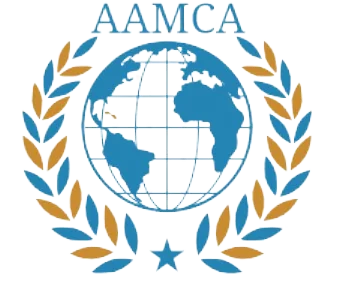Overview of Opium Cultivation Trends in Afghanistan
The 2025 UNODC survey presents a noteworthy analysis of opium poppy cultivation trends in Afghanistan, indicating significant changes within the country’s agricultural landscape. The report reveals that the area devoted to opium poppy cultivation has experienced a remarkable decrease, falling to approximately 120,000 hectares in 2025, a drop from 180,000 hectares recorded in the previous year. This decline represents a 33% reduction, marking one of the most substantial decreases in opium production in recent history.
This notable contraction in opium cultivation can be attributed to multiple factors, including increased government enforcement measures, the impact of international aid initiatives aimed at promoting alternative livelihoods, and shifts in local farming practices. Farmers, who once relied heavily on opium as a cash crop, are gradually turning towards the cultivation of alternative crops such as saffron, fruits, and vegetables, spurred by government incentives and assistance programs that emphasize sustainable agriculture.
However, the transition to alternative crops is not without its challenges. Environmental conditions, including prolonged droughts and fluctuating market prices, pose significant obstacles for farmers seeking to pivot away from opium poppy cultivation. Additionally, the shift requires substantial investment in training and resources to ensure that farmers can successfully adapt their farming techniques and achieve economic viability through the cultivation of these alternative crops.
The implications of this shift in opium cultivation extend beyond agricultural practices, potentially influencing local economies and regional stability. As farmers increasingly engage in alternative livelihoods, there may be a reduced reliance on the opium trade, which has historically fueled conflicts and contributed to instability in Afghanistan. Understanding these trends, the potential benefits, and the ongoing challenges will be critical as stakeholders address the complexities of agricultural transition in the country.
Impact on Farmers’ Income and Livelihoods
The decline in opium production in Afghanistan, as reported in the 2025 UNODC survey, has substantial economic implications for farmers who have traditionally relied on opium poppy cultivation as a primary source of income. With fluctuating prices and a drop in overall production, Afghan farmers are facing significant challenges, as income derived from opium sales has decreased markedly. This decline is exacerbating poverty levels and limiting the purchasing power of many households in rural areas.
In response to the declining profitability of opium, farmers are increasingly compelled to consider alternative crops. While this transition could lead to a more diversified agricultural sector, many farmers lack the necessary knowledge, resources, and access to markets for non-opium crops. The shift is not straightforward; it requires substantial investment in new methods, seeds, and in some cases, a complete redesign of irrigation systems. As a result, many farmers might remain skeptical about abandoning opium cultivation due to the immediate financial security it provides.
The situation is further complicated by external factors, such as the return of displaced Afghans and a reduction in humanitarian aid. The influx of returnees increases competition for limited local jobs, making it even more difficult for farmers to secure alternative income sources. This rise in competition, paired with a decrease in humanitarian resources, creates additional strain on local economies, hampering both agricultural and non-agricultural job growth. Consequently, Afghan farmers are left in a precarious position, needing to adapt to new realities while grappling with decreasing income and heightened economic pressures.
Shifts in Drug Trafficking Patterns and Global Implications
The recent changes in opium production in Afghanistan, highlighted by the 2025 UNODC survey, significantly impact drug trafficking dynamics both locally and internationally. As Afghan opium production experiences fluctuations, there is a consequential shift in the landscape of global drug trafficking. A reduction in opium output could lead to a surge in cultivation efforts in other regions, particularly in areas where agricultural conditions favor poppy growth. Countries in Southeast Asia, such as Myanmar and Laos, and regions in South America are often highlighted as potential alternatives for increased opium cultivation. This attempted resurgence poses additional challenges for international drug control mechanisms and regulatory bodies.
Furthermore, the rise of synthetic drugs such as methamphetamine has introduced a new dimension to organized crime within and beyond Afghanistan. Unlike traditional opiates, synthetic drugs can be manufactured in clandestine labs using readily available precursors, making them appealing to criminal networks. The ability to produce methamphetamine in various locations enables traffickers to adapt to the fluctuating opium market, ensuring a continuous supply of narcotics to meet global demand. As a result, the criminal organizations that once relied heavily on opium have diversified their operations, complicating efforts to combat drug trafficking.
The implications of these shifts are profound, as they complicate the landscape of law enforcement and drug policy both in Afghanistan and around the world. Borders previously considered secure by law enforcement may face new vulnerabilities as traffickers exploit emerging markets. Coordination among international law enforcement agencies becomes increasingly critical to monitor these adaptive patterns in drug trafficking and maintain effective strategies to mitigate the risks associated with both opiates and synthetic alternatives. As the world grapples with these changing dynamics, it is essential to develop nuanced approaches that address the root causes of opium cultivation while taking into account the evolving nature of global drug markets.
Strategies for Addressing the Drug Challenge in Afghanistan
The complexities surrounding Afghanistan’s opium production necessitate a multifaceted approach to tackle the drug challenge effectively. A primary strategy involves international collaboration aimed at enhancing counter-narcotics efforts. This includes partnerships between Afghanistan and global stakeholders, which can facilitate the sharing of resources, intelligence, and best practices. Collaborative programs can help create sustainable alternatives to poppy cultivation, mitigating economic dependencies that often drive farmers to participate in the opium trade.
An integrated approach must also prioritize support for local farmers, enabling them to transition away from poppy cultivation without experiencing financial instability. This support can take various forms, such as the development of agricultural programs that offer training and resources for growing alternative crops. Additionally, financial incentives or compensations might be necessary to encourage farmers to engage in sustainable practices, hence ensuring their economic viability while reducing opium production.
Moreover, implementing effective demand reduction strategies is crucial. This entails raising awareness about the social, economic, and health implications of drug use. Educational campaigns can inform the public about the dangers associated with opiates while promoting successful rehabilitation and recovery initiatives. Targeting demand not only decreases drug consumption within Afghanistan but also assists in diminishing international markets reliant on Afghan opium.
Furthermore, as the landscape of drug production evolves, it is vital to integrate synthetic drug monitoring into counter-narcotics programs. This could involve establishing robust surveillance systems to detect and address the growing trend of synthetic opioids produced in Afghanistan. Such proactive measures can help mitigate the risks posed by emerging drug threats while reinforcing ongoing eradication and prevention efforts.
In conclusion, addressing the drug challenge in Afghanistan requires deliberate strategies encompassing international collaboration, farmer support, demand reduction, and monitoring of synthetic drugs. By adopting a comprehensive approach, stakeholders can work towards creating a sustainable solution that not only targets opium production but also fosters the well-being of Afghan communities.




